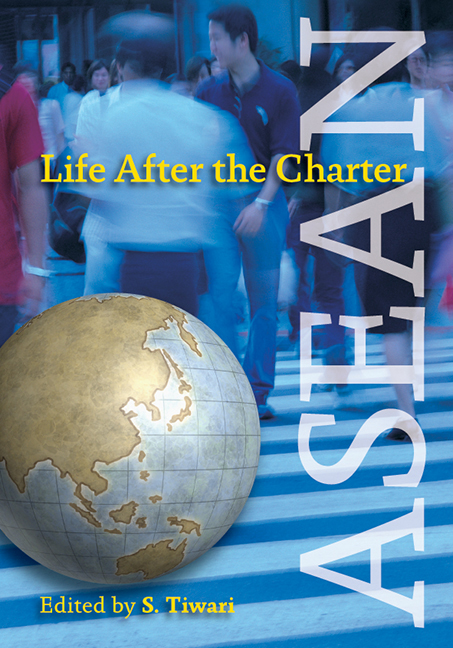Book contents
- Frontmatter
- Contents
- Foreword
- Preface
- List of Contributors
- Introduction
- 1 ASEAN Legal Personality under Its New Charter – Its Nature, Meaning and Implications: Status of the Work and Issues Involved
- 2 Does ASEAN Exist? The Association of Southeast Asian Nations as an International Legal Person
- 3 Life in ASEAN After the Entry into Force of the ASEAN Charter: Implications and Follow-ups
- 4 Translating the Design into a Bloc: The Domestic Implementation of the ASEAN Charter
- 5 ASEAN Trade in Goods Agreement (ATIGA)
- 6 The ASEAN Comprehensive Investment Agreement 2009: Its Objectives, Plans and Progress
- PRIVATE SECTOR PERSPECTIVES
- Index
Introduction
Published online by Cambridge University Press: 21 October 2015
- Frontmatter
- Contents
- Foreword
- Preface
- List of Contributors
- Introduction
- 1 ASEAN Legal Personality under Its New Charter – Its Nature, Meaning and Implications: Status of the Work and Issues Involved
- 2 Does ASEAN Exist? The Association of Southeast Asian Nations as an International Legal Person
- 3 Life in ASEAN After the Entry into Force of the ASEAN Charter: Implications and Follow-ups
- 4 Translating the Design into a Bloc: The Domestic Implementation of the ASEAN Charter
- 5 ASEAN Trade in Goods Agreement (ATIGA)
- 6 The ASEAN Comprehensive Investment Agreement 2009: Its Objectives, Plans and Progress
- PRIVATE SECTOR PERSPECTIVES
- Index
Summary
BACKGROUND
The Association of Southeast Asian Nations (ASEAN) was established on 8 August 1967 in Bangkok by the ASEAN Declaration. ASEAN had only five members at the time of its establishment: Indonesia, Malaysia, Philippines, Singapore and Thailand. The ASEAN Declaration spelt out the aspirations of the five nations and indicated a simple informal structure to carry them out.
Over the years, ASEAN expanded into a ten-member body with the following additional members: Brunei, Vietnam, Laos, Myanmar and Cambodia. Forty years on, it also finds itself in a very different globalized world of intense economic competition.
In adapting ASEAN to the changed environment, ASEAN leaders decided that ASEAN needed a meaningful instrument to spell out the aims, aspirations, vision, powers and structure of ASEAN. Hence, the ASEAN Charter was signed by the ASEAN states on 20 November 2007 at the 13th ASEAN Summit in Singapore. It entered into force on 15 December 2008, this date being the thirtieth day after all ten ASEAN member states had deposited their instruments of ratification with the Secretary-General of ASEAN.
What does the Charter do for ASEAN? In the words of the current ASEAN Secretary-General, Dr Surin Pitsuwan, the Charter:
… has helped ASEAN articulate our values, purposes, visions and foundations on which we are built and our desire to build a regional identity … It is now up to the stakeholders of ASEAN to take up the challenge of regional integration to respond creatively to globalisation and the opportunity to improve our lives. Although many challenges lie ahead, the ASEAN Charter gives us hope, purpose and importantly a framework of action for all the peoples of ASEAN.
(Extracted from the Foreword by the ASEAN Secretary-General to the book, The Making of the ASEAN Charter, edited by Tommy Koh, Rosario G. Manalo and Walter Woon)- Type
- Chapter
- Information
- ASEANLife after the Charter, pp. xv - xviiiPublisher: ISEAS–Yusof Ishak InstitutePrint publication year: 2010

